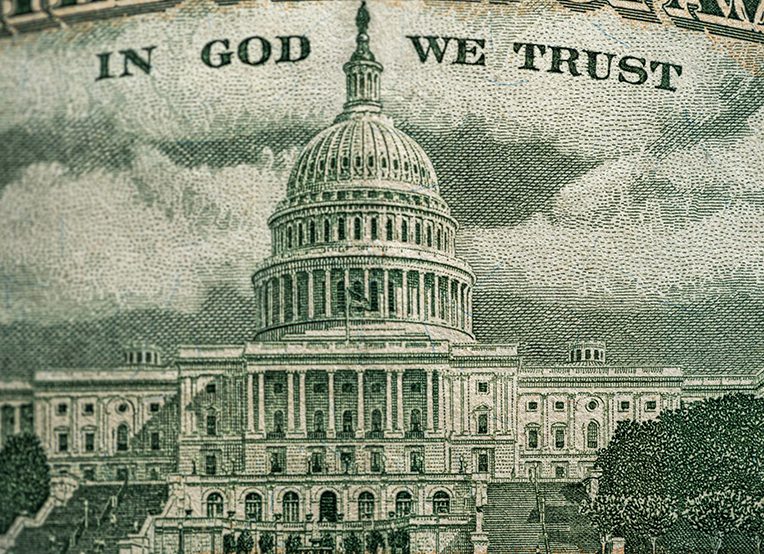Institutional ownership of U.S. corporations has increased ten-fold since 1950. New research from Haas shows this trend has political implications.

The finance world has witnessed extensive consolidation over the past several decades. Institutional investors owned just 6% of publicly traded U.S. companies in 1950; in 2017, they owned 65%. The “big three” of BlackRock, Vanguard, and State Street Global Investors held 5% of S&P 500 shares in 1998 and more than 20% by 2017.
For Matilde Bombardini, an associate professor at Berkeley Haas who has spent her career studying political influence, this trend raised a novel question. “If this is a phenomenon in the financial markets, where institutional investors are controlling increasingly large shares of the landscape, maybe there are also political implications,” she says. “Does this concentration in ownership translate into concentration in the so-called political market?”
The answer, she shows in a recent co-authored National Bureau of Economic Research working paper, appears to be yes. The researchers, who include Francesco Trebbi of Berkeley Haas, Marianne Bertrand of the University of Chicago, Raymond Fisman of Boston University, and Eyüb Yegen of the Hong Kong University of Science and Technology, looked at the connection between institutional ownership and political contributions. They found that political giving shifts following a large acquisition: For newly acquired firms, the correlation in giving to politicians favored by the investor increases by up to 70%.
“Following this one event, campaign contributions start moving closer together, in a sense,” Bombardini says. “These acquired firms start giving to politicians that the institutional investor gives to.”
Acquisitions and influence
The researchers collected data on investors that manage over $100 million in assets and on portfolio firms in which these investors have holdings. (The dataset covers the years 1980 to 2018.) They looked specifically at moments when an investor acquired 1% or more of the outstanding shares of a given portfolio firm.
In tandem, they matched names of investors and portfolio firms to their political action committees (PACs) using data from the Federal Election Commission. These PACs—574 connected with investors, 2,456 with portfolio firms—could in turn be connected to campaign contributions to specific candidates.
They found that large acquisitions were accompanied with a significant movement in giving toward the investors’ favored PACs, with the correlation between investor and portfolio firm increasing by 30% to 70%. The researchers noted that this realignment in donations comes at a time when giving, in general, is on the rise: Investment firms increased political expenditures by nearly a factor of six between 1980 and 2018. This trend implies that more money is coming from a smaller number of voices.
“Of course, one interpretation could be that investors acquire companies that are already like them, so the causation goes the other way,” Bombardini says. To test this interpretation, the researchers looked specifically at index funds, which make their acquisitions in order to replicate an index, like the S&P 500. That means these purchases were required at a specific and unplanned moment, so they are unlikely to be the result of political strategy or like-mindedness.
“We zero in on these kinds of acquisitions that are more random and still find the effect,” Bombardini says. “That helps alleviate the concern over causality.” They also found that the change in giving was driven primarily by portfolio firms moving toward investors and not the other way around.
Tough to regulate
Alongside the political implications, Bombardini and her colleagues describe potential trouble that these results raise for the realm of corporate governance. If portfolio firms are subtly nudged by their investors to contribute to politicians or political issues that are not directly tied to their business, that could derail profit maximization.
“These firms might just keep adding politicians to their roster that are not germane to their business,” Bombardini says. “So, you have a case of misaligned incentives.”
She emphasized that these types political donations would not be the result of explicit pressure from investors. Rather, they would be the result of an implicit understanding that by giving to preferred political candidates a firm could receive favorable treatment down the road.
But for Bombardini, the concerns over democracy are graver. For one, she wonders, does this soft influence show up in other domains? Are these same trends visible in lobbying dollars, or charitable giving, based on the concentrated heft of institutional investors? Perhaps more urgently, how might this subtle avenue of influence be reined in?
“Federal law is very clear on the fact that you cannot make political donations on behalf of someone else, but it’s not likely that the investor is asking the portfolio firm to donate,” Bombardini sayd. “This kind of quieter influence is hard to regulate, but we should at least be aware that this concentration of influence is happening. It should bring us back to the general questions that surround regulating campaign contributions.”